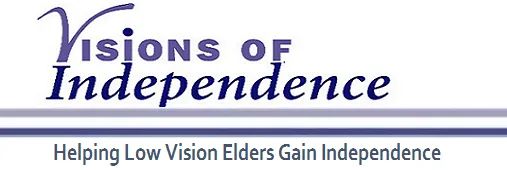Identifying money
One of the most important lessons we teach our low vision patients is how to identify money. It has the dual benefit of giving our patients more independence and giving them more confidence when they are paying for purchases.
The strategies are actually pretty simple. We teach patients to identify paper money by folding each denomination differently. Because $1 bills are used most often, we tell patients to keep them flat and unfolded. We suggest that $5 bills be folded in half vertically and $10 bills be folded horizontally. Twenty dollar bills are the most valuable so they get folded a special way, in fourths vertically. Patients can go to their local bank and get each denomination bundled separately and then fold the bills when they get home.
Coins are easy to identify once patients learn some basic facts. Quarters and dimes have a ridged edge. The quarters are larger than dimes so patients can easily feel the difference. Nickels and pennies both have smooth edges. Once the smooth edge has been identified, patients can feel that nickels are larger and heavier than pennies.
You can easily imagine the sense of accomplishment and normalcy when our patients can pay for their purchases with confidence.
